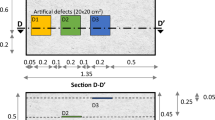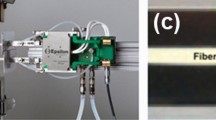Abstract
Shear distortion is the defect brought in the manufacturing stage of optical fiber panel of low-light-level (LLL) image intensifier. The traditional detection method of such defects is purely based on visual observation, so the recording measure is rough and the amount of manual intervention is large. According to the above facts, an objective detection method of shear distortion of LLL image intensifier based on global scanning and image patch edge feature analysis is proposed. Firstly, the inclination of parallel lines is calculated to realize the normalized rotation of the target image; Then, the effective area is scanned globally by means of spatial kernel for local defect detection. The image in the kernel is processed to retain only the edge features, and then the proposed shear distortion detection strategy is applied to each edge in the processed image. Finally, the distortion points in the local image are restored to the target image through the image patch spatial coordinates. To substantiate the performance of the proposed method, a series of image tubes with diverse degrees of shear distortion are put into experiments, and the relevant detection technologies are used as the comparison. It yields the conclusion that the proposed method is robust to the background noise, illumination change and image defects to some extent, and is superior to the relevant detection technology in overall performance. Compared with the traditional visual inspection method, this method not only standardizes the recording measure of test results, but also has better time stability.
















Similar content being viewed by others
Availability of data and material
Data sharing not applicable to this article as no datasets were generated or analyzed during the current study
References
Ai KC (2006) The progress and development of night vision technology. J Appl Opt 27(4):303–307. (In Chinese)
Bosch LA (2000) Image intensifier tube performance is what matters, image intensifiers and applications II. International Society for Optics and Photonics
Canny JF (1986) A computational approach to edge detection. IEEE Trans Pattern Anal Mach Intell 8(6):679–698
Chu J, Guo Z, Leng L (2018) Object detection based on multi-layer convolution feature fusion and online hard example mining. IEEE Access PP(99):1–1
GJB 2000-94 (1994) General specification for image intensifier assembly. (in Chinese)
Gonzalez RC, Woods RE (2010) Digital image processing. Publishing House of Electronics Industry
He B, Ma TY (2004) Visual C++ digital image. Post & Telecom Press, Beijing. (In Chinese)
Marinica M, Liviu C, Mihai J, Gheorghe C (1998) Real performance of image intensifier systems for night vision. Proc SPIE 3405:926–929
Oppenheim AV (1996) Signals and systems, 2nd edn. Pearson Education, London
Palm WJ (2008) Concise introduction to Matlab, Business & Economics
Xiang SM, Ni GQ (1999) The principle of photo-electronic imaging devices. National Defense Industry Press, pp 368–377. (In Chinese)
Wang Z, Wu F, Hu Z (2009) MSLD: a robust descriptor for line matching. Pattern Recogn 42(5):941–953
Wang LZ, Tan S, Qian YS, Zhu SC (2021) Automatic evaluation of vertex structural defects on the anode surface of a low-light-level image intensifier based on proposed individual image processing strategies. Appl Opt 60:6888–6901
WJ 2091-92 (1992) Test method of low light level image intensifier. (in Chinese)
Zhang Y, Chu J, Leng L, Miao J (2020) Mask refined R-CNN: a network for refining object details in instance segmentation. Sensors 20(4):1010
Author information
Authors and Affiliations
Contributions
Conceptualization, L.W.; methodology, L.W.; software, L.W.; validation, L.W. and Z.L.; formal analysis, Z.L.; investigation, F.L.; resources, L.W.; data curation, F.L.; writing—original draft preparation, L.W.; writing—review and editing, Z.L.; visualization, F.L.; supervision, Z.L.; project administration, F.L.. All authors have read and agreed to the published version of the manuscript.
Corresponding author
Ethics declarations
The authors have no relevant financial or non-financial interests to disclose.
Additional information
Publisher’s note
Springer Nature remains neutral with regard to jurisdictional claims in published maps and institutional affiliations.
Rights and permissions
Springer Nature or its licensor (e.g. a society or other partner) holds exclusive rights to this article under a publishing agreement with the author(s) or other rightsholder(s); author self-archiving of the accepted manuscript version of this article is solely governed by the terms of such publishing agreement and applicable law.
About this article
Cite this article
Wang, L., Li, Z. & Liu, F. Objective detection of shear distortion of low-light-level image intensifier based on global scanning and image patch edge feature analysis. Multimed Tools Appl 83, 3451–3471 (2024). https://doi.org/10.1007/s11042-023-15269-1
Received:
Revised:
Accepted:
Published:
Issue Date:
DOI: https://doi.org/10.1007/s11042-023-15269-1




